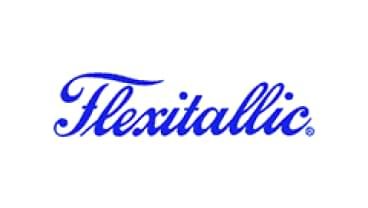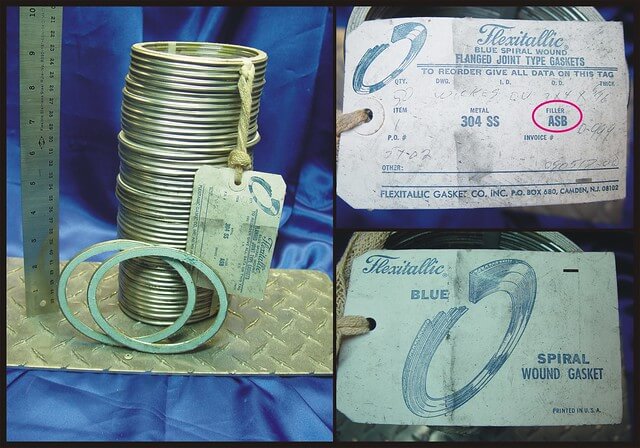Flexitallic Gasket Company
From 1912 to 1992, Flexitallic Gasket Company manufactured asbestos-containing spiral-wound gaskets. Lawsuits stemming from exposure to these products caused its parent company, Turner & Newall, to file for bankruptcy. A trust fund was established with $635 million to handle future asbestos claims.

-
Amount in Trust: $635 million
-
Year Trust was Created: 2007
Written by Michelle Whitmer • Edited By Walter Pacheco
Asbestos.com is the nation’s most trusted mesothelioma resource
The Mesothelioma Center at Asbestos.com has provided patients and their loved ones the most updated and reliable information on mesothelioma and asbestos exposure since 2006.
Our team of Patient Advocates includes a medical doctor, a registered nurse, health services administrators, veterans, VA-accredited Claims Agents, an oncology patient navigator and hospice care expert. Their combined expertise means we help any mesothelioma patient or loved one through every step of their cancer journey.
More than 30 contributors, including mesothelioma doctors, survivors, health care professionals and other experts, have peer-reviewed our website and written unique research-driven articles to ensure you get the highest-quality medical and health information.
About The Mesothelioma Center at Asbestos.com
- Assisting mesothelioma patients and their loved ones since 2006.
- Helps more than 50% of mesothelioma patients diagnosed annually in the U.S.
- A+ rating from the Better Business Bureau.
- 5-star reviewed mesothelioma and support organization.
Testimonials
My family has only the highest compliment for the assistance and support that we received from The Mesothelioma Center. This is a staff of compassionate and knowledgeable individuals who respect what your family is experiencing and who go the extra mile to make an unfortunate diagnosis less stressful. Information and assistance were provided by The Mesothelioma Center at no cost to our family.LashawnMesothelioma patient’s daughter
How to Cite Asbestos.com’s Article
APA
Whitmer, M. (2023, December 19). Flexitallic Gasket Company. Asbestos.com. Retrieved April 23, 2024, from https://www.asbestos.com/companies/flexitallic-gasket-company/
MLA
Whitmer, Michelle. "Flexitallic Gasket Company." Asbestos.com, 19 Dec 2023, https://www.asbestos.com/companies/flexitallic-gasket-company/.
Chicago
Whitmer, Michelle. "Flexitallic Gasket Company." Asbestos.com. Last modified December 19, 2023. https://www.asbestos.com/companies/flexitallic-gasket-company/.
Flexitallic’s History with Asbestos
The predecessor to Flexitallic’s U.S. business was founded in England in the mid-19th century and made sheet materials. Flexitallic relocated to Camden, New Jersey, in 1912 to form its U.S. division, and produced the first spiral-wound industrial gasket that year.
Flexitallic was the sole manufacturer of this product until the 1940s. The company subsequently developed a number of other proprietary gasket and valve seal products for various industries. Unfortunately, Flexitallic’s spiral-wound gaskets were made with asbestos tape.
The company gained notoriety during World War II because its specialized gaskets were used on U.S. Navy battleships to prevent steam loss, which allowed the ships to maintain full power in heavy seas.
British asbestos conglomerate T&N PLC, originally known as Turner & Newall Ltd., purchased the business in 1970. In 1986, T&N moved the company to Delaware.
In 1992, Flexitallic reportedly stopped filling its spiral-wound gaskets with asbestos. Today, its spiral-wound gaskets use a variety of different fillers, including vermiculite and graphite.
T&N sold its assets to Dan-Loc Bolt and Gasket in 1997 and agreed to protect Dan-Loc from asbestos claims by retaining its asbestos liabilities.
About a year later, T&N began succumbing to the weight of asbestos lawsuits. It was then purchased by Federal-Mogul, which agreed to honor the original indemnity agreement with Dan-Loc.
Dan-Loc gave the company its current name, The Flexitallic Group, and moved its headquarters to Deer Park, Texas, right outside of Houston, where the business continues to operate today.
Development of the T&N Subfund Trust
The T&N and Flexitallic asbestos claims that Federal-Mogul acquired proved too much for the company to bear and forced it to file for Chapter 11 bankruptcy protection on Oct. 1, 2001.
Federal-Mogul emerged from bankruptcy on Nov. 13, 2007. It created a trust fund with four subfunds to organize claims resulting from different asbestos companies it previously acquired.
The T&N Subfund of the Federal-Mogul Asbestos Injury Trust is the subfund that handles all Flexitallic asbestos claims. It was initially funded with $635 million and began accepting claims on Aug. 25, 2010.
The T&N Subfund’s current payment percentage is 8.5%. The scheduled value of a mesothelioma claim in this trust is $200,000.

Asbestos Litigation Involving Flexitallic
Flexitallic claims accounted for nearly 158,000 of the approximately 350,000 asbestos lawsuits filed against Federal-Mogul. These lawsuits were filed by former Flexitallic employees and end users of Flexitallic gaskets.
- Twenty-two Texas refinery workers suffering from asbestosis filed a case against Flexitallic and other manufacturers in 2001, winning a total of $35.2 million in compensation.
- A California jury awarded $4.2 million to a U.S. Navy veteran in 2001. He claimed he developed mesothelioma after exposure to Flexitallic’s asbestos gaskets while working as a boiler tender on a U.S. Navy destroyer.
- In 2000, a Louisiana jury awarded $1.2 million to the widow of U.S. Navy veteran Earlon Nunez, who died of mesothelioma at the age of 49 after exposure to asbestos products, including Flexitallic’s asbestos gaskets. Nunez worked in the boiler room of the USS James E. Keyes destroyer and his job involved changing out asbestos gaskets on the boiler. Flexitallic was held 10% liable for the verdict.
Flexitallic’s Asbestos Products
Flexitallic made and sold asbestos-containing spiral-wound gaskets under names such as:
- Style D (a self-centering gasket)
- Style R (gaskets for large male and female joints)
- Style T (gaskets for marine boilers)
Asbestos lawsuits against Flexitallic arise from exposure to its spiral-wound industrial gasket, which contained layers of asbestos tape between the gasket’s metal rings.
The gasket was made by spiraling alternating strips of asbestos tape and metal into an interior ring, which was then fitted inside an exterior metal ring. The asbestos tape contained 90% asbestos.
According to Flexitallic advertisements printed in the 1950s and 1960s, the company used white chrysotile asbestos from Canada and blue crocidolite asbestos from Africa.
Asbestos fibers were used as a filler material because of their strength and superior resistance to corrosion. Manufacturers also valued asbestos for its extremely high melting point.

Flexitallic’s Occupations at Risk
The following occupations faced risk of exposure to Flexitallic’s asbestos gaskets:
- Flexitallic manufacturing plant workers
- Pipefitters
- Shipyard workers
- Refinery workers
- Boiler workers
- Veterans of the U.S. armed forces
Workers who manufactured products for Flexitallic encountered harmful levels of asbestos exposure. End users of Flexitallic gaskets were exposed during installation and removal.
A 2022 report by the European Commission noted that in 2019 alone, over 70,000 workers died from past exposure to asbestos.
Asbestos exposure during manufacturing, installation or removal of Flexitallic’s gaskets caused thousands of workers to develop asbestos-related diseases.







